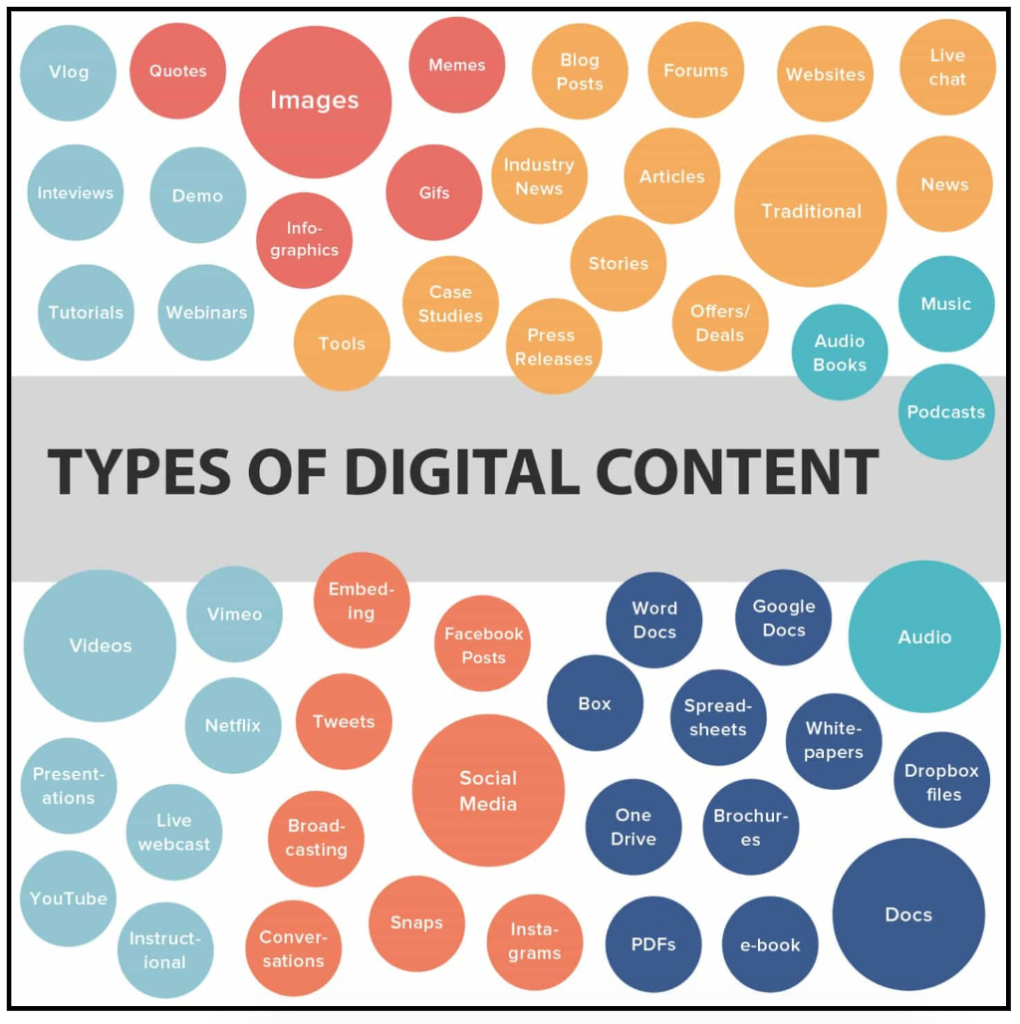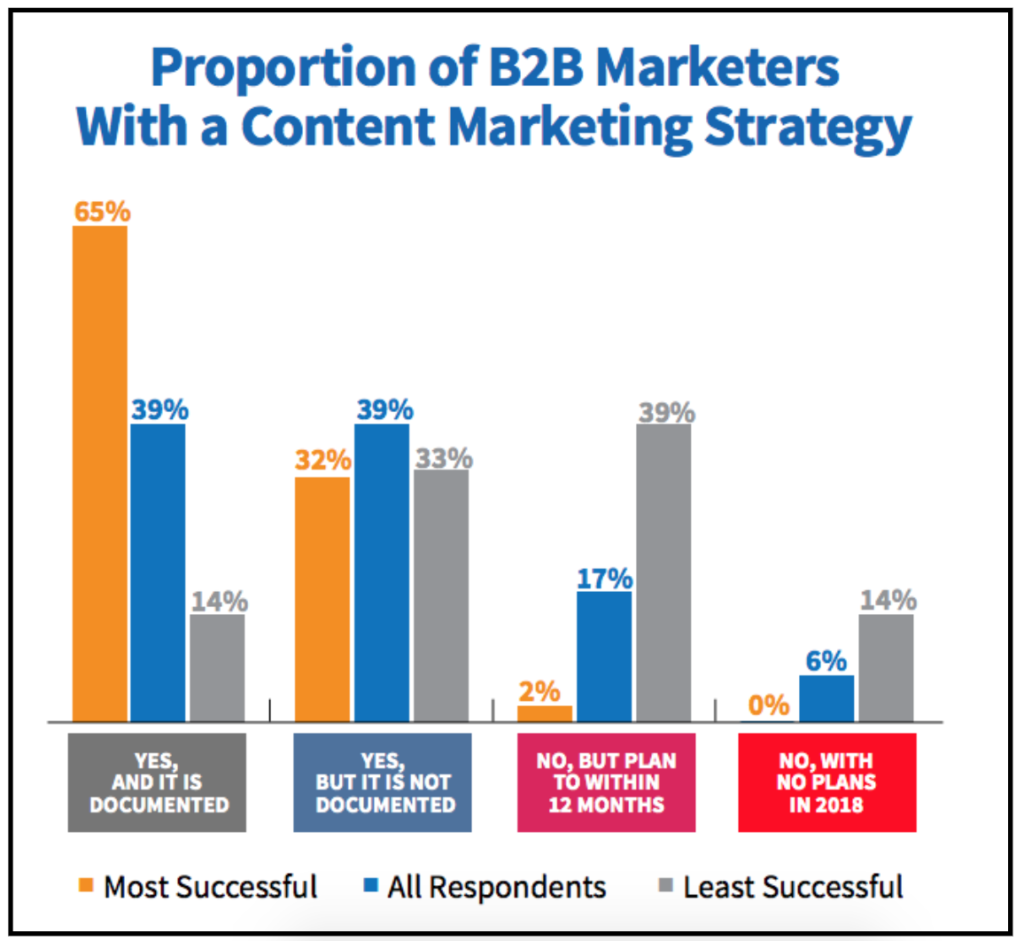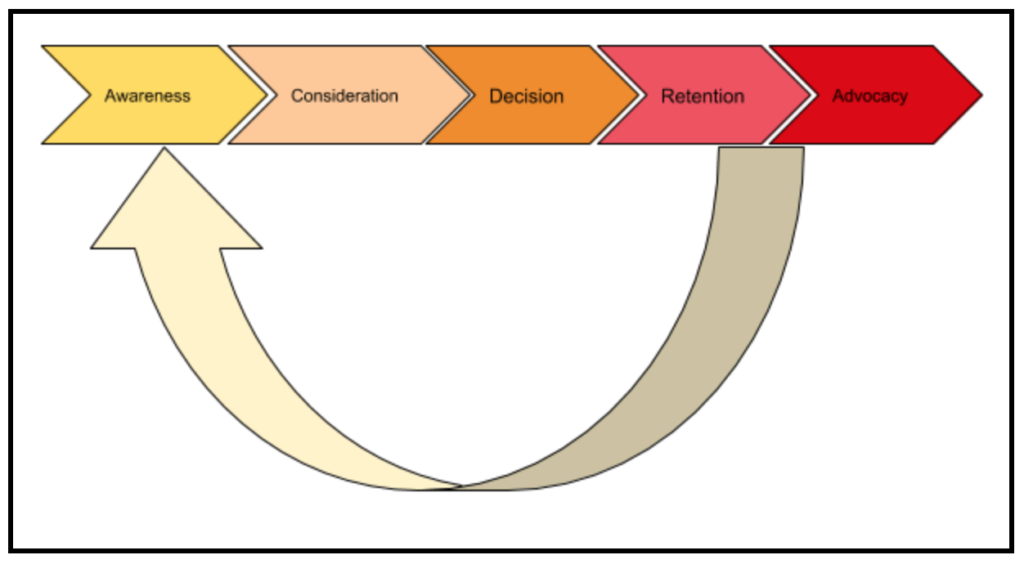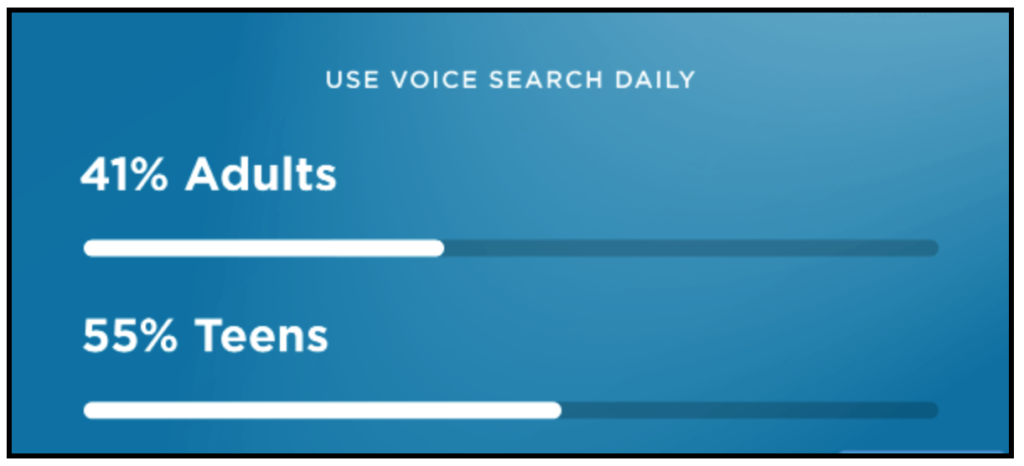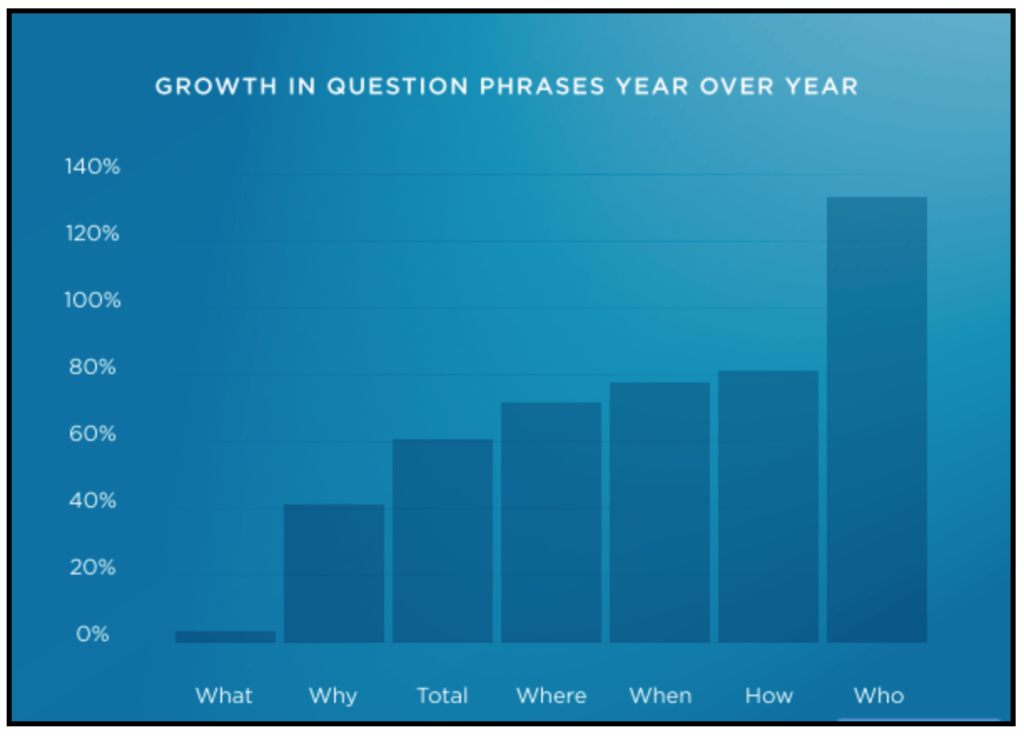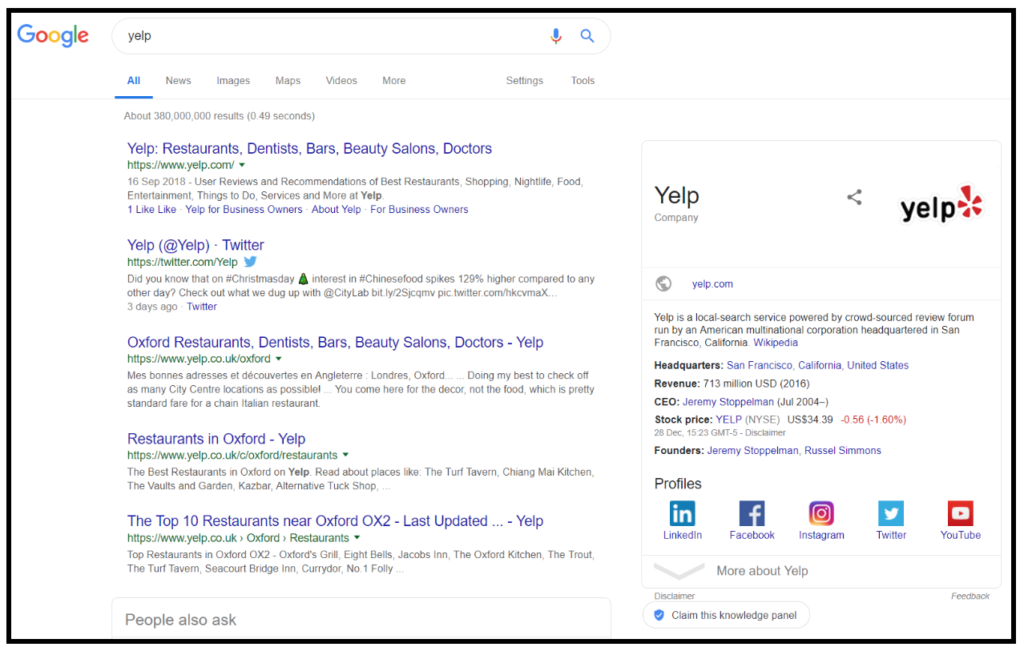Content for content’s sake is not enough
What content marketing success looks like
What’s new in content marketing for 2019
- Content marketing is marketing
- Strategy is more important than ever
- A changing buyer funnel
- Content focused on customer success
- Distribution of content needs to be sophisticated
- Immersive content continues to be key
- Personalization is crucial
- Voice search
Content, as they say, is king. Consumers want it, search engines value it, and it is relatively cost-effective. But only if you’re doing it well.
The content marketing landscape is changing with both consumers and SERPS being more discerning than ever about what they deem useful, engaging and worth taking action on.
No longer is it enough just to churn out regular blog content. There’s too much out there, so the same old content won’t cut through the noise and reach your target audience anymore.
In 2019, companies need to develop a content strategy that focuses on getting the right kind of content in front of the right audience, at the right time and in the right way. It must be focused and measurable.
The bottom line is: if it can’t be done properly, it’s not worth doing at all.
Content for content’s sake is not enough
It wasn’t too long ago – just a few years, actually – when content marketers focused on publishing as much content as possible. It was about quantity over quality.
Search engines rewarded websites with the most content – it didn’t really matter how relevant or keyword-rich it was. And because of this, there arose an industry of black-hat marketing which produced as much content as possible simply to boost search rankings.
However, as search engines have become more sophisticated, they now value relevance over volume, and the focus has shifted towards quality over quantity.
In fact, Google explicitly sets out what it regards as quality content, making it clear that anything that fails to reach these expectations won’t be rewarded in search rankings:
Source: Google
Consumers are also more discerning about what they click on, and are much more wise to the clickbait trickery that has become a scourge of the online world.
In a recent study by Pew Research Center, it was found that nearly half of all 18- to 49-year olds got their news and information online. They look to online content to provide them with helpful and reliable content, and so are unlikely to fall into the clickbait trap.
Today’s search engines and consumers expect content to be useful, valuable, credible, high-quality, and engaging. If you’re not prepared to produce content that ticks all of these boxes then, frankly, it’s not worth bothering at all.
But if you’re not quite ready to throw in the towel, then hang in there. These tips might help you find a way through and start on your journey to creating the kind of content that pulls its weight for your business and for your customers.
What content marketing success looks like
All businesses are different, and logically, so are their goals. So before you start revamping your content marketing, it’s worth identifying what success looks like in 2019 for your particular company.
The KPIs you identify need to be actionable if you’re going to make a success of your content. For example, vanity metrics like “engagement” or “reach” are good at telling you how well your audience is consuming your content, but they only shows you part of the picture.
More robust metrics that’ll steer you away from creating content for content’s sake are:
-
- Return on investment – are the results of your content worth more than what it cost you to produce?
- Conversion rate – how many people who see your content go on to take an action (make a purchase, sign up to your newsletter, make a booking, etc)
- Customer lifetime value – how much is each customer worth throughout the entirety of your relationship?
What’s new in content marketing for 2019
The good news for content marketers is that 2019 is a pretty cool place to be when it comes to creating and sharing content. With the growth of immersive technologies and AI, and with consumers continuing to multitask, content is becoming a lot more interactive than ever before.
And with the proliferation of big data and machine learning, content is more data-driven than ever which, if you ask me, makes it a whole lot more exciting.
So here are the top trends to look out for in 2019 to keep you ahead of the content curve:
Content marketing is marketing
There’s no getting away from it: marketing is all about content. Consumers want and need information at their fingertips immediately, and if it’s not available they will look elsewhere.
But content doesn’t just mean text. We’re not talking blog posts and web copy here. In 2019 we’ll be seeing content types expand – as they have done year on year over the last decade or so.
From a social media post, to a live chat; from a shareable spreadsheet to an Instagram Story, there are many and varied ways of producing and sharing content.
Source: Search Engine Journal
It’s time to take a mental shift away from content being a task that needs to be done, to thinking of content as the basis of your business, and your marketing in particular. This will help you to refocus your energies.
Start by listing out all of your content types. If the list looks pretty boring, then you’re due for a shake up. Find the gaps and imagine new ways of creating and sharing your content.
Top tip: Take a sneak peak at what your competitors are doing. If they’re killing it with Instagram Stories, then why not give it a go? Or try out Facebook Live as a similar tactic.
Strategy is more important than ever
If content is your marketing, then marketers are starting to see its potential to achieve specific goals. Different content needs to be tailored to different audiences at different stages of their journey through your brand.
Because of this, marketers need a strategy more than ever so that content is targeted for a purpose and isn’t created and shared aimlessly.
According the Content Marketing Institute, 65% of the most successful businesses have a documented content marketing strategy.
Your strategy is helpful for a few reasons, but in particular:
- It helps you align your activity to your overall business goals
- It keeps you focused on the needs of your customer
- It gives you something to keep checking back on to evaluate your progress
You’ve already identified what content marketing success looks like, so now it’s time to pin down your actionable goals. And once you know your business goals then you can begin to identify how your content can support them.
A changing buyer funnel
The way consumers interact with brands has changed dramatically over the last decade or so.
Yet the current model of the buyer funnel assumes that a consumer takes a linear route from top of the funnel, straight to the bottom, where they end their journey and carry on their merry way.
It doesn’t take into account what happens at the end of the transaction, and assumes that the interaction between consumer and brand is a transaction and nothing more.
What brands need to do in 2019 is consider the buyer journey as a more cyclical model. The ideal consumer is the one who not only makes a transaction, but who returns for more and who recommends your brand to others.
As such, your content needs to focus on lead nurturing throughout the whole journey, including after-sales when you need to encourage loyalty and recommendation onwards.
Top tip: Revisit your customer journey map/ buyer funnel, and refocus on the later stages of the journey. List out all the touchpoints between your brand and customer at the end of the funnel.
Content focused on customer success
As I’ve discussed, the new buyer funnel model tailors content to the post-sales interaction between brand and customer.
And this is for good reason. Holding onto existing customers makes far more business sense than spending time and resources gaining new ones.
Not only have you already convinced them that you’re worth buying from, and so that part is taken care of, but repeat customers spend more than first-time buyers. It’s even estimated that 40% of a store’s income is generated by only 8% of its customers.
Having said this, a recent study by Smart Insights has found that 47% of all content is produced for only the top of the funnel – the awareness stage of the buyer journey.
With this in mind, a significant proportion of your company’s content should be dedicated to helping your customers after they’ve made a purchase from you. It’s at this point that they’re (hopefully) happy with their purchase and hot to either make a recommendation or to purchase from you again.
A significant part of your content strategy should be to design content that speaks to customers at this particular point of the journey, rather than leaving them spat out at the bottom end of your sales funnel, never to be seen again.
From video product tutorials and downloadable how-tos, through to email campaigns reminding them of upcoming offers, or personalized recommendations based on their purchasing history, the content produced for customers who have bought from you cannot be overlooked.
Check out this video tutorial from Wurth Usa. It’s a simple product demonstration, but one which would prove extremely useful for customers needing a bit of extra help following their purchase of the drill bit:
Source: Wurth
Top tip: Using your newly polished buyer funnel, identify the gaps in content towards the end of the buyer journey. Make a list of all the opportunities for content both at the point of sale and beyond to encourage loyalty and recommendation.
Distribution of content needs to be sophisticated
The way content is being distributed and shared online is also changing.
No longer is it okay to let your content circulate endlessly around Twitter in the vain hope that it’ll be shared and clicked on.
Social media platforms – and consumers in general – are busier than ever. People are multitasking across platforms and devices, between online and offline, email and WhatsApp. Their consumer journey is far from straightforward, as is their consumption of content.
Research carried out by Verto demonstrates that marketers need to be aware of two trends as a result of changing consumer behaviors:
- The mobile journey
- Ways in which consumers multitask between platforms, devices and apps.
Brands of today need to work harder than ever to get the right content in front of the right people at the right time and to ensure the buyer journey remains seamless across all devices and platforms.
This is where it’s important to join forces between sales and marketing teams, and between on- and offline.
Top tip: Create an integrated plan with your sales and marketing teams to identify all the opportunities for clever content distribution.
Immersive content continues to be key
With the increasing use of AI in marketing, along with the consumer appetite for immediacy, there’s a growing trend of brands creating immediate and immersive content.
Live streaming is one tactic brands are using. Either via Facebook Live, YouTube Live or Instagram Stories, marketers are dedicating a great deal of their content to speaking directly to their customers in real-time, showing them behind-the-scenes insight into the brand and its values.
And immersive realities like Virtual and Augmented reality are gradually becoming a content option, with an estimated 37 million VR headsets being expected to sell by 2020.
We’ve seen the likes of Snapchat use AR for a while now, with its face-altering graphics.
Commercial outfits like IKEA are starting to use AR as a means by which people can try before they buy by viewing a virtual rendition of their homes with IKEA furniture artificially dropped in.
Source: Wired.com
Top tip: Start small by trying out some live storytelling via Instagram or Facebook. Use your data to monitor its engagement and ability to drive traffic and/or conversions. Next, start looking at options for developing some AR content using tools like Facebook Spaces available on HTC Vive or Oculus Rift.
Personalization is crucial
Personalization has swiftly moved from being a bonus feature to being a consumer expectation. It’s estimated that 74% of consumers feel frustrated when website content isn’t personalized.
Source: Amazon.com
Okay, so customers don’t always expect the full Amazon “Inspired by your shopping trends” treatment, but they are at least expecting to be greeted by name in an email.
Whatever your view, adopting a personalization and recommendation strategy shouldn’t be too far away in your plans, because before long, your competitors will be ahead of you. They know as well as you do that the wave is coming thick and fast.
Top tip: Start by making sure all of your email marketing and live chat is personalized, and then start shopping around for recommendation software. If you plan for it in advance, then you can start to budget your time and resources towards it ahead of time.
Voice search
With the rise of home assistants like Google Home and Amazon Echo, along with smartphone support like iPhone’s Siri and Android’s Google Assistant, modern consumers are accustomed to using their voices to make an online enquiry.
It’s estimated that by 2020, around half of all browsing sessions will be conducted via voice. Currently 41% of adults and 55% of teens are already using it. And with Google getting ready to launch it’s “Duplex” assistant which will see customers being able to make real-life arrangements – appointments and phone calls – the time is now to get your site optimized for voice search.
Source: Backlinko.com
How do you optimize for voice search? It’s not quite as difficult as it sounds.
The first step is to acknowledge that the way consumers search using their voice is profoundly different from how they search using a keyboard:
- They use longer and more conversational queries
- They use questions and show intent
- They’re highly localized
- They therefore impact on 3rd party listings
Source: Backlinko.com
The second step is to tailor your content to respond to the queries you might receive by voice search:
- Use natural language in your content, including local references where necessary
- Focus on longer-tail key phrases in your content
- Create content that specifically responds to long-tail queries customers will be asking
- Create voice search FAQ pages
- Create content for “position zero” or Featured Snippets so that your content is the first to be picked up by voice assistants.
Top tip: Use telephone schema to get your contact details picked up via Amazon Alexa and Google Home.
Optimizing your content
Creating content is one thing, but making sure it gets found is another. This is where your content structure and optimization comes in.
SEO is an ever-evolving discipline and keeping up with all the new tips and tricks can be a chore. But if you’re not prepared to keep your site fully optimized then you might as well give up now.
And in case you were wondering, although they say “content is king,” it doesn’t mean SEO isn’t also. In fact, even the best content in the world will fail if it’s not optimized for search.
So where to start, and what’s new in 2019?
First thing is to start with the basics and give your website a New Year checkup:
Polish your metadata
Check out the top pages of your website in search rankings. What do your title tags and meta-descriptions look like?
If they’re too long, not long enough, repetitive, or lacking keywords, then that might indicate that all of your pages need a metadata overhaul.
Keyword-rich, engaging and emotive descriptions and titles will help improve your CTR and get your content seen.
Crawl your site for issues
Tools like WooRank or Moz Pro (both come with a free trial) will run an automatic health check on your website and will advise you of all of the areas you need to fix to boost your authority.
Content-related items to look out for include: page speed, metadata, content gaps, headings, keyword consistency, alt-attribute, you blog, mobile-friendliness, and many more besides.
Get your site mobile optimized
If you haven’t already then now’s the time to get your site optimized for mobile.
Mobile searches are gradually outnumbering desktop searches and if your website isn’t up to scratch, you’ll lose valuable customers. In fact, it’s estimated that more than half of all search results are from smartphones, according to Google mobile search stats.
Use Structured Data
Structured Data is the term given for the task of adding data into your website code to help search engines understand more about your site. It’s sometimes called “data markup” because certain data is being marked up or highlighted so that it appears in search results.
For example, if you think that you’d benefit from search engines knowing your best-selling product’s price and availability, then you can add the appropriate markup and this information will show up in search.
Essentially this is a non-mandatory, yet highly recommended, way of getting your content ranked and clicked on by potential customers.
If your website contains recipes, events, products, reviews, videos, or music then you’d benefit from applying structured data to get your content found.
Rich Snippets are one result of structured markup. They allow you to add extra context to content like articles, recipes, products, ratings/reviews and videos.
Knowledge Graphs are another result of structured markup. These are the boxes containing details, usually about a brand, to the right hand side of the search results:
For more help on applying structured data to your site, here’s more from Moz.
In summary
So it’s time to give up content marketing. You never really saw the point in it and it’s just another chore when there are a billion other tasks to focus on in 2019. Right?
Well, if you’re not ready to give up quite so easily, then NOW is the time to turn things around.
Content is no longer the afterthought of the busy marketer. It is the central focus of their role. It is marketing. It’s what finds your customers in the first place.
It’s what draws them in, turns them into leads, and then to customers. It’s what keeps them in the loop and welcomes them back for more. It’s what encourages them to sing your praises to their friends and families.
And because it’s so central, it’s not easy. It takes strategy, planning and a great deal of hard work. It takes lateral thinking and collaboration across your organisation.
But if done well, and hand-in-hand with the nuts-and-bolts SEO, then it can be the very thing that underpins the success of your brand.
So, will 2019 be the year you give up on content marketing…?






